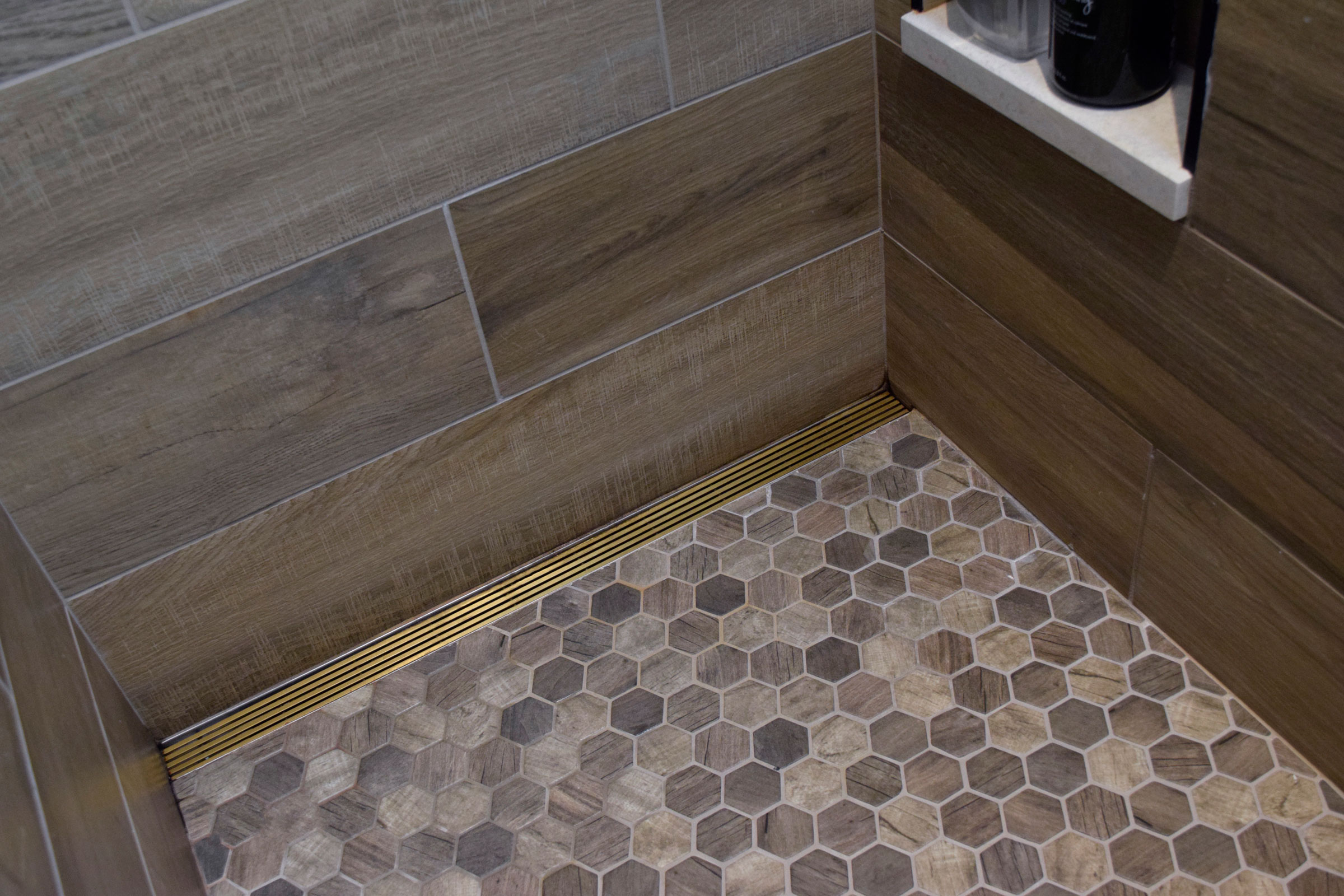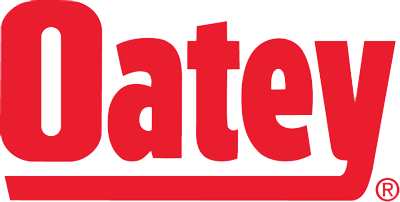Story at a glance:
- The shower drain is critical to water efficiency and long-term environmental impact.
- The design of your shower drain has many impacts—from how it’s installed to how well it holds up.
When it comes to designing a sustainable bathroom, conversations typically revolve around low-flow showerheads, recycled tile, or water-saving toilets. But one often overlooked feature—the shower drain—plays a critical role in both water efficiency and long-term environmental impact. From material selection to layout and flow rate, a well-chosen drain can support the broader sustainability goals of green building practices.
Drain design significantly impacts maintenance frequency and product longevity—key pillars of sustainable construction. A well-designed shower drain promotes efficient water flow, minimizes debris buildup, and reduces the likelihood of clogs or corrosion—all of which lower the need for intensive maintenance or early replacement.
In this article we will explore what you should consider when choosing shower drains for eco-conscious bathrooms and how innovative solutions are helping advance the cause.
Drain Type
The shape and configuration of a shower drain affect more than aesthetics; they play a significant role in water flow efficiency, layout flexibility, and ease of maintenance, all of which contribute to a more sustainable and functional bathroom environment.
Each drain type has its strengths, and the best choice often depends on the bathroom layout, user needs, and sustainability goals. Linear drains support universal design and large-format tiles with minimal waste, while square and round point drains offer reliable performance with simpler installation requirements.
These are the types of drains and some things to consider about each.
Linear Drains
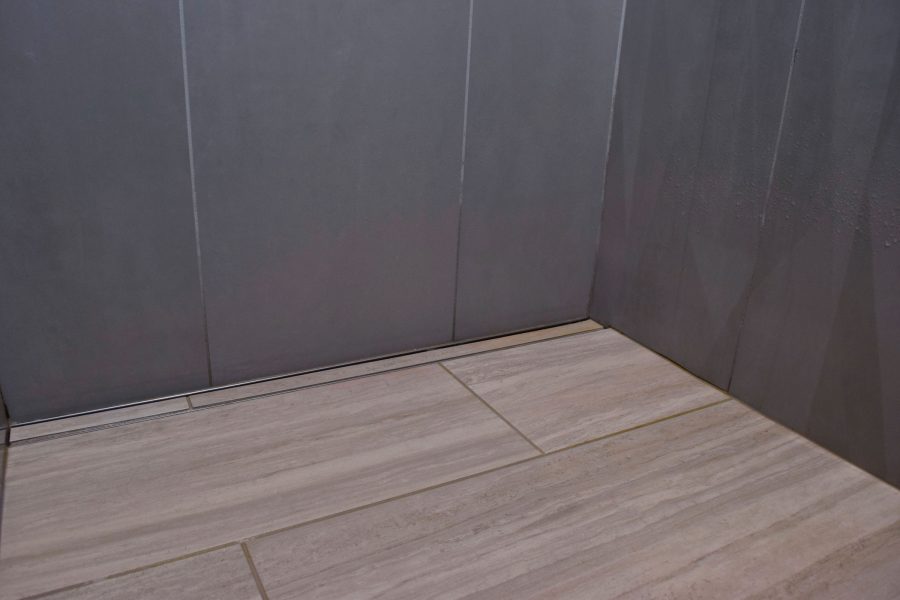
Photo courtesy of Oatey Co.
Linear drains are elongated and typically installed flush along one wall or at the entrance of the shower. The single slope toward the linear drain opens up endless opportunities for tile choices while minimizing grout lines, joints, and seams where mold, mildew, and grime can take hold. By eliminating the four-way slope in the shower pan, a linear drain allows tilers to create an uninterrupted flow from the overall bathroom to the shower with large-format tile and solid-surface materials.
Square-Shaped Point Drains
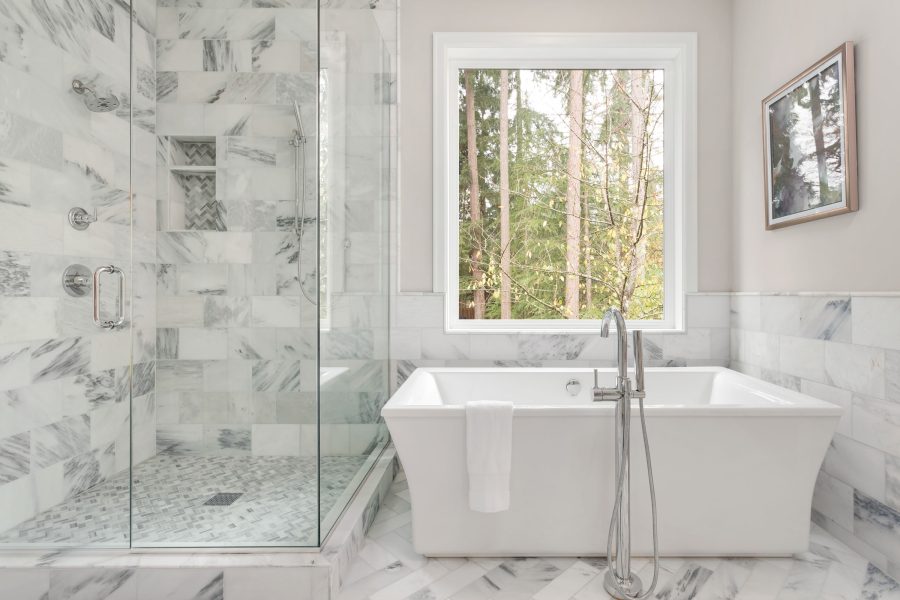
Photo courtesy of Oatey Co.
Square-shaped point drains offer a balanced solution for traditional and modern showers. Their symmetrical design makes them easy to align with square tile layouts, and they are available in standard and decorative configurations. Point drains are compact yet capable of efficient water removal. Their footprint makes them a versatile choice in both retrofit and new construction scenarios.
Round Point Drains
Round point drains are the classic option, often used in residential builds and renovations. While they may not offer the same aesthetic flexibility as linear or square-shaped models, round drains are typically cost-effective, easy to install, and well-suited for showers with centered slopes.
Recycled Materials and Circular Design
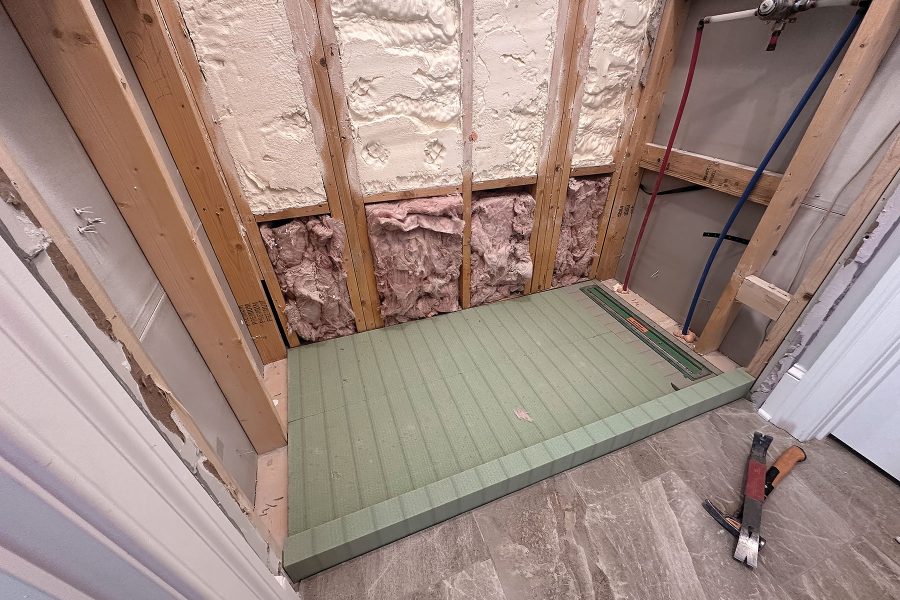
Photo courtesy of Oatey Co.
Oatey’s use of recycled PET foam panels in its QuickDrain pre-sloped shower pan systems is a standout example of circular economy thinking. These panels—made from post-consumer water bottles—are not just lightweight and easy to install, but they also demonstrate how manufacturers can integrate recycled content into core plumbing infrastructure.
This kind of material innovation supports LEED credits and aligns with the principles of the Living Building Challenge, which encourages responsible sourcing and transparency.
Drain Materials
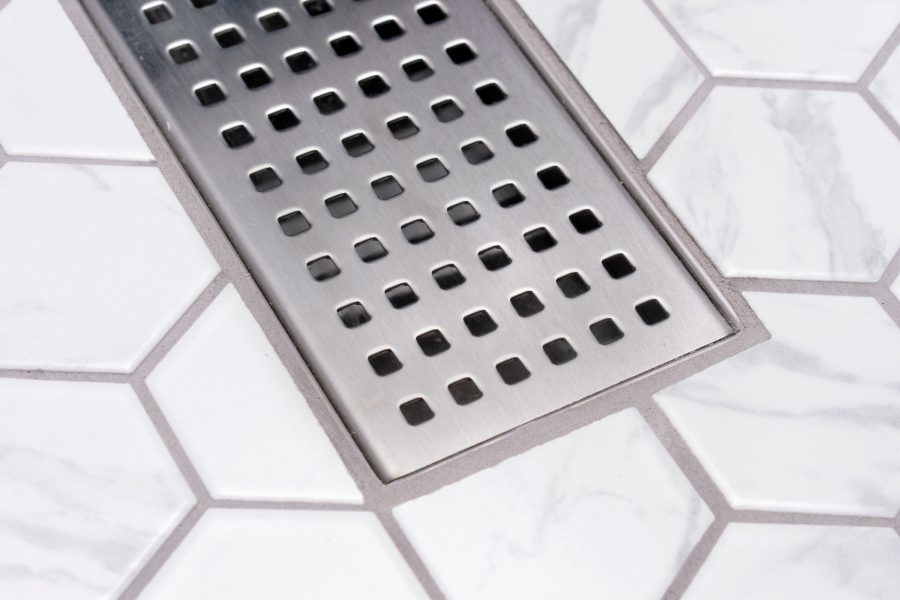
Photo courtesy of Oatey Co.
In terms of longevity, choosing high-quality, corrosion-resistant materials like marine-grade stainless steel or advanced polymer composites ensures the drain maintains its structural integrity and appearance over time. This durability directly supports the principles of life cycle sustainability, minimizing waste associated with frequent replacements.
Drain bodies crafted from high-quality, 304 grade stainless steel, such as Oatey’s Decorative Shower Drains, sold as Designline and Vivante, offer superior corrosion resistance and durability, even in high-moisture environments. By withstanding frequent water exposure and chemical cleaners, Oatey Decorative Drains maintain their appearance and functionality for years to come.
When properly installed, PVC drains like Oatey Testable 130 Series PVC Drains are lightweight, durable, and long-lasting. They offer a long life cycle and are chemically inert, which helps maintain indoor environmental quality. Cast iron, once a drainage staple, is falling out of favor due to its weight, limited recyclability, and rough interior surfaces that tend to promote buildup.
PVC and stainless steel offer smoother internal surfaces than cast iron, making them less prone to buildup. Smooth-surfaced materials like PVC and stainless steel also have an added sustainability benefit. They’re easier to clean and less likely to harbor bacteria, reducing the need for harsh chemical cleaners.
Drain Location & Flow Rate Capacity
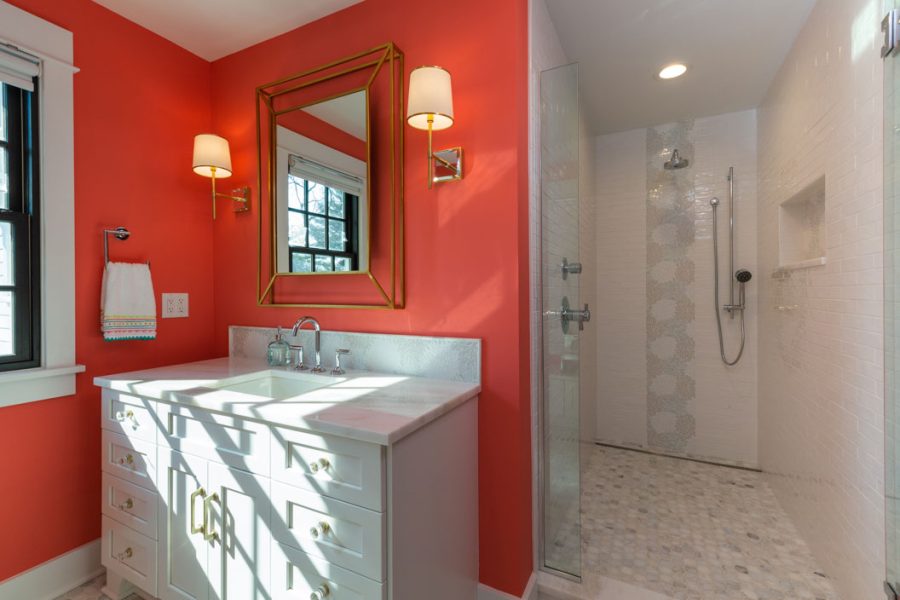
Photo courtesy of Oatey Co.
In ADA-compliant or open-plan showers, linear drains are often placed at the entrance of the shower for accessibility. However, placement directly at the threshold may allow water to escape past the drain, reducing drainage efficiency.
For better performance, linear drains in curbless showers should ideally be placed along a side or back wall. This allows for more effective water capture and minimizes overflow. For instance, Oatey’s QuickDrain Linear Drains are designed to be installed in a variety of locations. Still, when positioned against a wall, running wall-to-wall, they can handle up to 12 gallons per minute (GPM)—a critical consideration in showers with multiple heads or body sprays.
Most linear drains are restricted to back wall placement to mitigate water flowing around the outer edges. However, since QuickDrain linear drains are designed to be installed wall-to-wall, that issue has been eliminated. Once you are able to locate the linear drain wall-to-wall at the entryway, installers are not forced to recess the wood subfloor or break up and repour concrete subfloors.
A QuickDrain linear drain’s flow rate for a 2-inch outlet is 12 GPM in a curbed shower and 5 GPM in a curbless application with the drain at the shower’s entryway. Also compatible with a 2-inch drain pipe, Oatey’s point drains can handle up to 10 GPM (the sanitary lines and P-trap sizes limit the actual volume). The linear drains are engineered to handle high flow rates, making them well-suited for low- and high-volume environments. A well-matched flow rate also reduces the chance of backups, which can otherwise lead to premature drain system replacement, negatively impacting the building’s environmental footprint. Not to mention the added cost of having a backup cleared by a professional.
While sustainability efforts focus on reducing water consumption through low-flow fixtures, showers still need a drain system capable of handling volume, especially in luxury or commercial settings with multiple spray outlets. A drain’s flow rate capacity ensures water doesn’t accumulate and lead to mold or mildew, preventing health risks for occupants.
Drain Body Slope
One of the most important design elements is the slope of the drain body, which should be engineered to facilitate self-cleaning flow patterns. This reduces the accumulation of soap scum, hair, and other waste—common causes of backups and microbial growth.
A drain’s ability to channel water efficiently depends largely on its internal slope and design geometry. The more effectively a drain moves water toward the outlet, the less energy or intervention is required to maintain it.
Oatey’s QuickDrain linear and square drain options and Oatey Decorative Drains are engineered with internal slopes that enhance drainage performance, preventing pooling and ensuring seamless self-cleaning drainage. These features help reduce the need for frequent cleaning and lower the risk of long-term clogs, thus minimizing material and chemical usage over the product’s lifespan. Oatey’s QuickDrain linear drains’ fully sloped troughs promote efficient water drainage, minimizing slip hazards, and reducing mold, mildew, and bacteria growth.
Over time drains can accumulate a buildup of hair, soap scum, and biofilm, which impairs performance and necessitates frequent cleaning—often with harsh, environmentally damaging chemicals. Here material smoothness and drain geometry make a big difference.
Removable Strainers and Clean-Out Features
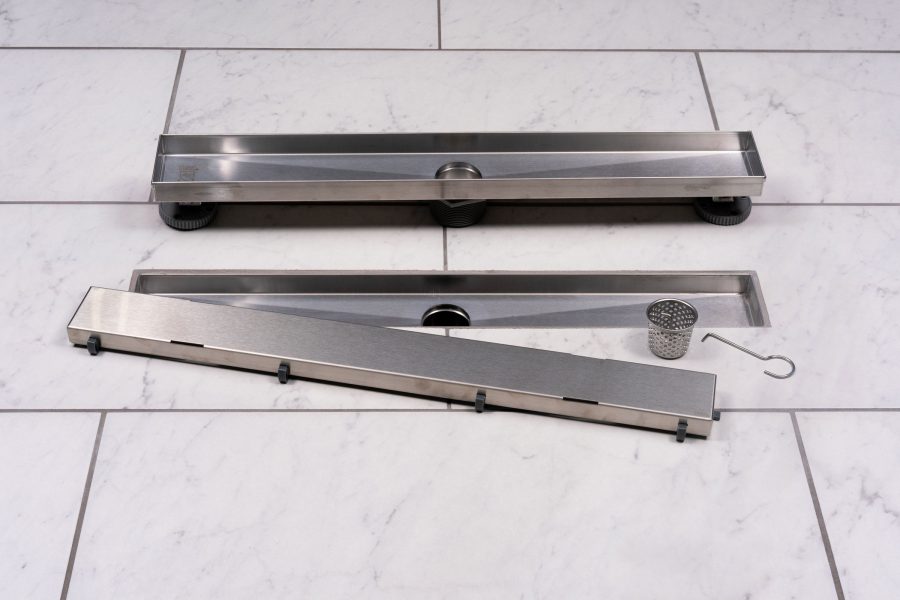
Photo courtesy of Oatey Co.
Ease of maintenance is another essential element of sustainability. Removable strainers and accessible clean-out features simplify maintenance tasks without requiring specialized tools or chemical cleaners. These features support long-term hygiene and prevent debris from obstructing flow.
Oatey Decorative Drains and QuickDrain SquareDrain have removable debris baskets that capture hair and other particles before they enter the plumbing system, reducing the likelihood of blockages. The debris basket is easily removable, simplifying cleaning and ensuring optimal drain performance. A lifting key is provided to remove the drain cover easily for cleaning and maintenance.
These features allow homeowners and facility managers to conduct maintenance without needing caustic chemicals or specialized tools.
Code Compliance
Beyond performance, all drain systems must meet local plumbing codes, many of which have evolved to incorporate green building standards. Proper installation—including slope, support, and material choice—ensures not only public safety, but also maximizes long-term resource efficiency.
Codes are built around doing things safely, cleanly, and efficiently. When the codes are followed, you’ll usually end up with as close to a green job as possible.
Adhering to code also helps ensure proper slope for drainage, preventing stagnant water and mold growth—key concerns in green building.
In sustainable bathroom design the shower drain deserves far more attention than it typically gets. Material durability, drainage efficiency, placement, and maintainability all factor into a system’s overall sustainability profile. Whether you’re working on a LEED-certified commercial building or a net-zero home, choosing the right drain can improve water efficiency, reduce maintenance impacts, and contribute meaningfully to long-term environmental goals.
As building standards evolve, so too must our attention to every component of the design.

